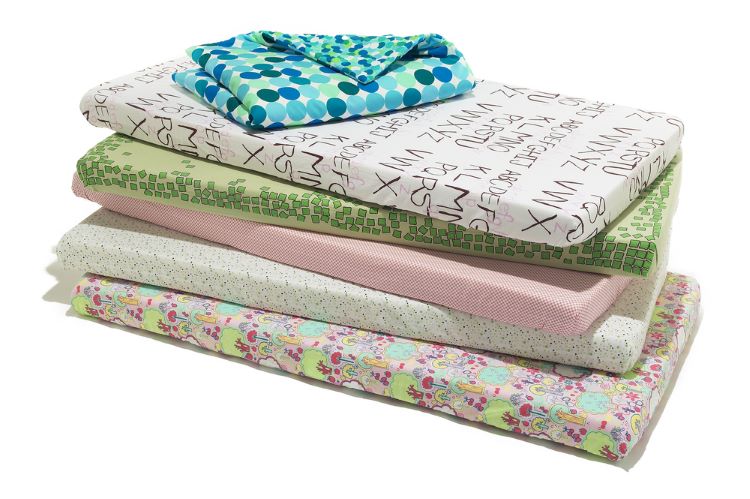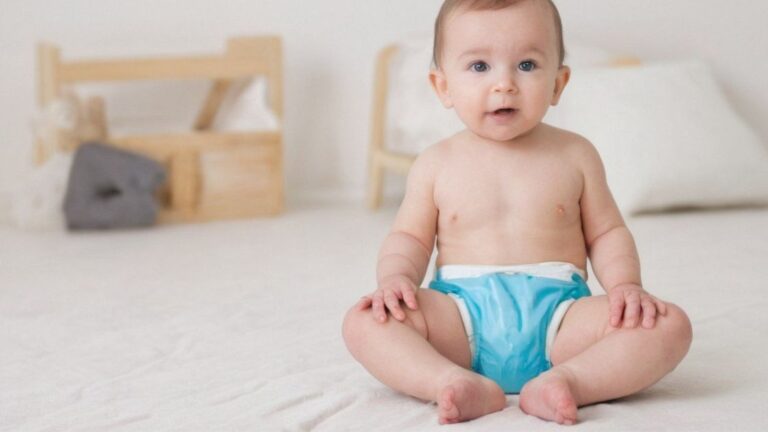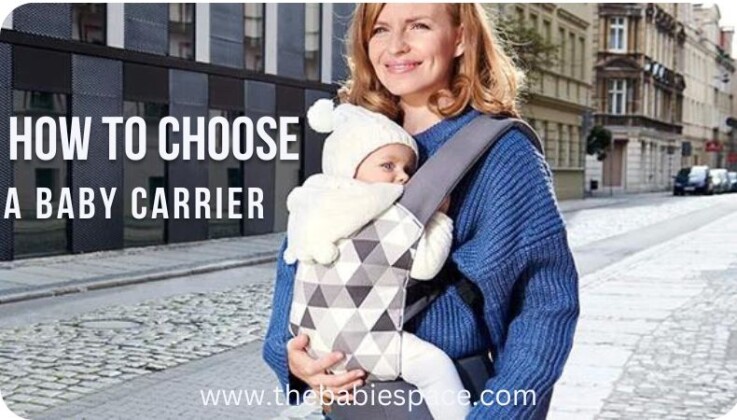How Many Swaddles Do You Need
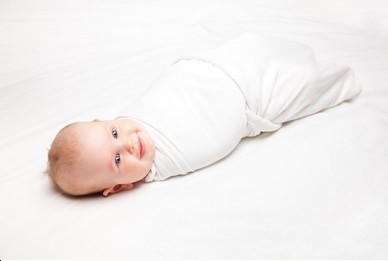
Last updated on March 22nd, 2023 at 02:44 pm
Now that you are aware of the benefits of swaddling receiving blankets, let’s get to know how many swaddles do you need. How do you know if your baby needs to swaddle more or less? We all want the best for our babies, which is why you are here. You’ll find everything you need to know about swaddling in this blog post.
When it comes to answering how many swaddles you need the simple answer is that as many as you can afford to buy and manage, Needing a specific number of swaddles is a good thing.
Knowing the exact amount needed will give you lots of flexibility when it comes to stocking up on supplies and deciding what to purchase. It’s also great for budgeting. Once you know how much money you can allocate to swaddles, you can create a plan that is tailored specifically to your needs.
Swaddling is a technique to calm and soothe your baby. It’s an age-old practice that has been passed down from generation to generation with good reason. Swaddling can help reduce crying, prevent startling, and promote sleep by making babies feel secure and loved.
If you are seeking to create a sense of stability for your baby, swaddling is the way to go. “Swaddling makes babies feel loved and safe”.
- Receiving Blanket Vs Swaddle Vs Muslin Blanket?
- Why you should use a swaddle?
- How many swaddles do you need?
- Can Swaddle Cause Overheating?
- Here are some instructions for making your own swaddles:
- Things to look out for when buying a baby blanket or wrap
- Different Swaddles for Different Times of the Day
- Five Effective Tips for Using a Swaddle
- Top Ten Benefits of Using a Baby Wrap or Blanket.
Receiving Blanket Vs Swaddle Vs Muslin Blanket?
A swaddle is a piece of cloth that is wrapped around a baby’s body, typically covering their chest, hips, and legs. Swaddle blankets help provide infants with a sense of safety and security. Baby blanket wraps improve the babies’ sleep well at night because they feel like they are still in the womb, where it is warm and cozy.
Are receiving blankets and swaddles the same thing? No muslin blankets, receiving blankets, and swaddles are all different types of cloth that can be used to swaddle a baby.
Receiving blankets:
Are lightweight and breathable, made of 100% organic cotton for a soft touch on the baby’s skin. The fabric is designed to provide optimal comfort for both the parent(s) and baby with its ultra-soft hand feel. Recommended by hospitals across the world, receiving blankets is a must-have for any new parent.
Swaddles:
If you compare receiving blankets vs swaddle blankets, swaddles are made of the same lightweight and breathable 100% organic cotton fabric as our receiving blankets. In addition to that, swaddling wraps have a light layer of batting in between the layers to provide optimal warmth without adding unnecessary weight or bulk. Swaddle clothes are typically a little bigger than a receiving blanket and have a strong Velcro closure that makes it easy to achieve the swaddling effect without fussing with snaps or ties each time you use one.
Muslin blankets:
Are incredibly thin and lightweight cotton that has a soft, breathable weave and feel. Muslin blankets can be used for practically anything. Whether you’re using it as a baby swaddle cloth or as a nursing cover, or even lay them on the ground for playtime; muslin is always an option. What makes it even better is that they get softer with every wash and last twice as long as other traditional cotton swaddles.
Why you should use a swaddle?
- The purpose of swaddling an infant is to mimic the feeling they had while still in the womb – as if they were still being held close by their mother. A baby does not know how to control its limbs when it is born, swaddling and receiving blankets can help to soothe a crying baby that is searching for its familiar ‘cocoon’ feeling.
- In ancient times, swaddling an infant was referred to as “making a baby” or “making a little man of” and was thought to make the baby stronger.
- Swaddling is used in many parts of the world and has been for hundreds, if not thousands of years. It has long been used for infant care and comfort and today swaddling is still widely practiced throughout much of Asia the biggest one, Africa, South America, and the Middle East.
- European parents also used swaddling to calm their infants, but by the 16th century, it began to be viewed as a form of bondage that could lead to hip problems and developmental issues. In the early 90th century, swaddling was opposed by pediatricians in Europe, who argued that it interfered with proper physical development in infancy.
- However, in post-industrial Europe swaddling is experiencing a revival in some areas. It is seen by many parents as an effective way to soothe their fussy infants and toddlers when they are having difficulty sleeping.
- On deciding that swaddles are a must-have for your loved one. You might be wondering how many swaddling blankets I need. Here is the answer to your concern. Keep reading down.

How many swaddles do you need?
- There is no one-size-fits-all answer to this question, as the number of swaddles you need will vary depending on a variety of factors. However, here are a few guidelines to help you figure out how many swaddles you need:
- The number of swaddles you need will depend on the size of your baby. Smaller babies will need fewer swaddles, while larger babies may need more than one.
- If you live in a warm climate, it may not be necessary to buy as many swaddles. However, if you live somewhere cold, you’ll want to make sure that your baby stays warm all the time – so purchasing more swaddles might be a good idea.
- If you’re planning on using cloth diapers and washable wipes, you’ll need to buy more swaddles (4-6 swaddling blankets for newborns and 6-8 swaddle blankets for older babies) since your baby will get dirty more often.
- If you’re going to use disposable diapers, you’ll need fewer swaddles. One or two swaddles will be enough if you plan on using a lot of diapers. However, four or five swaddles may be necessary if you want a backup or a spare in case the diaper leaks.
- The number of swaddles you need will also depend on how often you plan on washing them. If you wash your swaddles every other day, you’ll want to own more of them than if you were going to wash them once a week.
- If you don’t perform any nighttime diaper changes at all and your baby is exclusively breastfed, then one or two swaddles for nighttime should be enough. However, if you plan on changing your baby’s diaper at night, then you’ll need to buy more swaddles (four or five are usually enough).
- If you’re going to have multiple caregivers who will be putting the swaddle on your baby in the middle of the night, then it’s a good idea to own more swaddles. For example, if you live with both of your parents and they are the ones who will be putting the swaddle on your baby at night, then owning six or seven swaddles should be enough.
- If you’re worried about the number of swaddles you’ll need, there are always ways to make your swaddles – with old receiving blankets or even tea towels. After all, it’s better to have too many than not enough.
Can Swaddle Cause Overheating?
There is some concern that swaddling can cause overheating in newborns. This is because when babies are tightly swaddled, they cannot move their arms and legs around to cool themselves down. However, research has shown that swaddling does not cause overheating if it is done correctly. Properly swaddled babies tend to stay cooler than babies who are not swaddled. How to make your own swaddles?
Now that you know how many swaddles do you need, it’s time to learn how to make your swaddles. Homemade sleeping wraps for babies can be a great way to save money, and it’s also a great way to ensure that you have the perfect fit for your baby.
Here are some instructions for making your own swaddles:
There are several ways to swaddle your baby, but not all swaddle sizes are made the same. For example, while receiving blankets may work as newborn baby swaddle blankets, other babies require an actual swaddle blanket with legs to get the best results. Let’s look into the considerations when buying swaddling blankets.
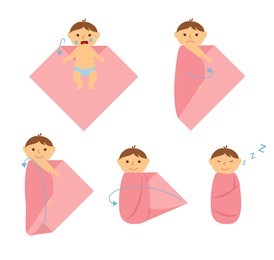
Things to look out for when buying a baby blanket or wrap
When buying a baby blanket or wrap, there are a few things you’ll want to keep in mind:
Some babies are comforted by being wrapped nice and snug while others prefer just a little extra room to wiggle around. Some children have more active sleep patterns than others so you will need to use your best judgment when choosing a swaddle.
For example, if you know your baby likes to squirm around and prefers to have their hands out while sleeping then you will likely want to invest in an actual swaddle blanket that has arm openings so they can sleep with their arms unrestrained. When buying any type of swaddle, make sure you purchase the correct swaddle sizes.
If your baby prefers having their arms out while sleeping then a swaddle blanket with arm openings is best for them. For infants who aren’t fans of being swaddled, you can purchase special sleep sacks that are designed to keep your child warm at night without restricting their movement.
Different Swaddles for Different Times of the Day
There are different swaddles for different times of the day. For example, you will want a lightweight and breathable swaddle for the daytime, when your baby will likely be sweating more. At nighttime, you will want a heavier and warmer swaddle to keep your baby warm.
So, how do you swaddle your baby correctly? Here are a few tips:
Five Effective Tips for Using a Swaddle
So, you have purchased your swaddles and are ready to begin the process of calming and soothing your baby. Here are some tips for using a swaddle:
When used correctly baby blankets & swaddles can do wonders for a baby’s comfort. Let’s look into the benefits of using a swaddle.
Top Ten Benefits of Using a Baby Wrap or Blanket.
There are a variety of different swaddles on the market that parents can choose from to help soothe their fussy newborn. Swaddling is an effective method for calming down infants and can have a plethora of benefits for both baby and parent alike.
To Sum Up
I hope you found this article helpful on the question of how many swaddles do you need. It depends on your baby’s sleep patterns and preferences. Some babies do well with just a receiving blanket, while others require an actual swaddle wrap to stay asleep. Make sure you purchase the correct size and type of swaddle for your child so that you can help them get the most restful sleep possible.
There are a variety of swaddles on the market these days, so it can be tricky to determine which one will work best for your baby. In this article, we have outlined the different types of swaddles and when you should use them. We also provided some tips on how to correctly swaddle your baby. When done correctly, swaddling should not cause overheating in babies, and in fact, may help keep them cooler than when they are not swaddled. With the right fitting swaddle blanket or wrap, any parent can calm their crying infant using this time-tested technique.
Happy Parenting 🙂


